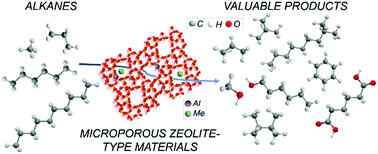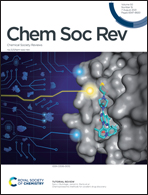Activation and conversion of alkanes in the confined space of zeolite-type materials
Abstract
Microporous zeolite-type materials, with crystalline porous structures formed by well-defined channels and cages of molecular dimensions, have been widely employed as heterogeneous catalysts since the early 1960s, due to their wide variety of framework topologies, compositional flexibility and hydrothermal stability. The possible selection of the microporous structure and of the elements located in framework and extraframework positions enables the design of highly selective catalysts with well-defined active sites of acidic, basic or redox character, opening the path to their application in a wide range of catalytic processes. This versatility and high catalytic efficiency is the key factor enabling their use in the activation and conversion of different alkanes, ranging from methane to long chain n-paraffins. Alkanes are highly stable molecules, but their abundance and low cost have been two main driving forces for the development of processes directed to their upgrading over the last 50 years. However, the availability of advanced characterization tools combined with molecular modelling has enabled a more fundamental approach to the activation and conversion of alkanes, with most of the recent research being focused on the functionalization of methane and light alkanes, where their selective transformation at reasonable conversions remains, even nowadays, an important challenge. In this review, we will cover the use of microporous zeolite-type materials as components of mono- and bifunctional catalysts in the catalytic activation and conversion of C1+ alkanes under non-oxidative or oxidative conditions. In each case, the alkane activation will be approached from a fundamental perspective, with the aim of understanding, at the molecular level, the role of the active sites involved in the activation and transformation of the different molecules and the contribution of shape-selective or confinement effects imposed by the microporous structure.

- This article is part of the themed collection: Recent Advances in Alkane Conversion


 Please wait while we load your content...
Please wait while we load your content...